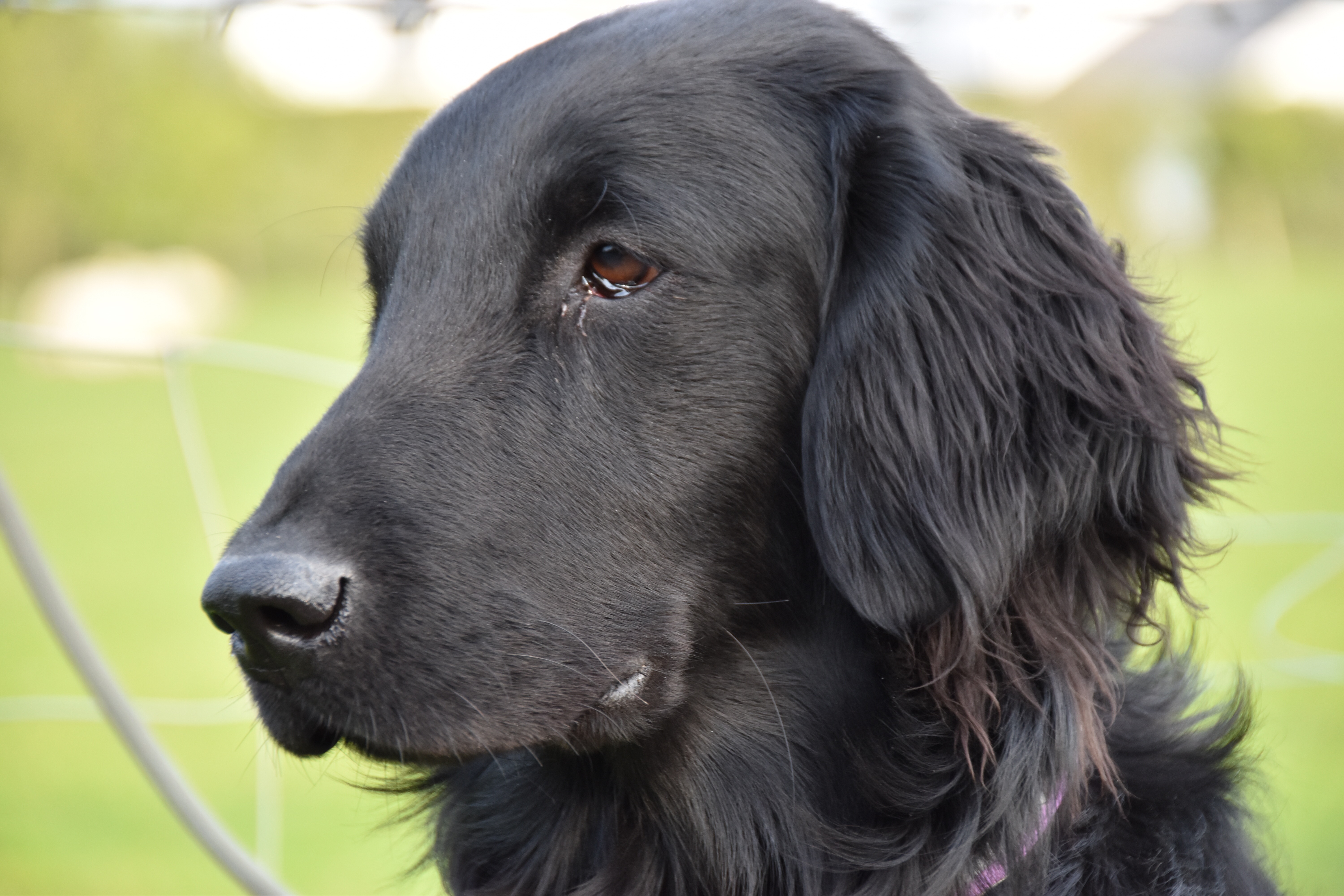Australian Cattle Dog – Profile – Health – Information you can use.
The Australian Cattle Dog
Dog breed info
Australian Cattle Dog
Weight: 35 — 45 lbs
Height: 17” — 20”
AKC Rank 2008 #66
Life Span: 10—13 yrs
Group: Herding
Origin: Australia
- Dog Health, Dog Illness, Medical Problems
Dog Breed Info – Australian Cattle Dog
A sharp looking Blue Heeler
Breed Overview
Origin 1800’s. Original function: Cattle herding. Today Cattle herding. Colors: Blue, Blue mottled with or without other markings, red speckled.
In the early 1800’s, a herding dog was needed that could withstand traveling long distances over rough terrain in hot weather and control cattle without barking. In 1840, a man named Hall bred some smooth Blue Merle Highland Collies to Dingos, producing a strain known as Hall’s Heelers. Other breeders crossed their breeds with other breeds including the Bull Terrier, Dalmatian, and the Black and Tan Kelpie, a sheepherding breed. The result was a dog with the herding instincts of a Collie and the endurance, ruggedness and quietness of the Dingo, as well as the horse-sense and protectiveness of the Dalmatian, all with a distinctive coat. The dogs became increasingly valuable to the cattle industry, they got the name Queensland Game Heeler. They then became known as Australian Cattle Dogs. This Cattle Dog was slow to catch on in America because it bore little resemblance to established herding breeds. The AKC did register the breed in 1980, however and it has since become a capable show dog..
Yes, highly trainable. These are smart dogs that do well with any kind of training, including sports and agility. Pick up a clicker at a pet store and try clicker training because that is one of the best training methods available. It’s so simple to use.
Crate Training
Want to crate train your Australian Cattle Dog puppy? It’s easy and if you’re interested, take a look and you’ll see what to do. Crate training your puppy will save many headaches and problems.
Potty Training
Australian Cattle Dog puppies are very easy to house train, potty train, toilet train, housebreak or whatever you want to call it. If you have a puppy, decide if you want to crate or paper potty train it. For the best results, we have a page at Crate vs Paper Potty Training which will help you decide and from there you can get all the information you need to get the job done. Always praise the pup profusely when she goes potty in the RIGHT PLACE so she knows she has done a good thing. Either method will work for this breed.
If you have an older dog, take the dog outside every two hours until she gets the idea which door leads to her potty area. Older dogs catch on to the potty or housebreaking pretty fast once they are shown what to do.
Australian Cattle Dog close-up
The Australian Cattle Dog can be described as smart, hardy, stubborn, tenacious, energetic and untiring. These are all traits essential to a driver of head-strong cattle. This dog must have a productive job to do or it will become destructive in an effort to use it’s energy.
Some of these dogs have shown separation anxiety which can be dealt with by putting in a little effort. This is a highly responsive and obedient dog; a great partner in rough adventure. The dog will nip at heels of running children but is good with older children. The ACD is happiest when herding but also likes to be inside with his human family.
Friendly Toward Other Dogs
The cattle dog bonds with his own pack but not strange dogs.
Friendly Toward Other Pets
No, usually not unless raised with them. Even then, be careful.
Friendly Toward Strangers
No, they are wary of strangers, tending to protect their property and family.
Playfulness
Yes, quite playful.
Yes, affectionate with family and older kids.
Older kids in their family. Not so friendly with strange people of any age.
No. Too much energy.
Living environment
House with large, fenced yard, big enough to throw a ball in a good, brisk game of fetch. Also, a farm or ranch would be a great home for this dog..
Energy level
Extremely high. The Australian Cattle Dog needs challenging and hard physical exercise every day, such as jogging and chasing Frisbees and balls. Simple walks on leash won’t do it.
Obedience training is a good way to work off energy in addition to jogging and Frisbee..
Excellent. It’s in their blood.
Excellent. It’s in their blood.
Brush weekly with a stiff bristle brush to remove dead hair.
3rd book from the left is “101 Dog Tricks” which offers numerous challenges to increase your dog’s mental stimulation. There are things in this book I had never imagined for a dog to learn!
Last book on the right is by the American National Red Cross and deals with dog health, dog illness, emergencies and injuries and is a valuable reference manual for all dog owners. _______________________________________________ Top
Australian Cattle Dog Breeders
In the event you decide to go looking for Australian Cattle Dog puppies, be SURE to find reputable breeders that really know what they are doing. Be sure the puppy has been well socialized and started in obedience training. It’s not often that Aust. Cattle Dog puppies turn up in dog pounds.
Australian Cattle Dog Breeders with puppies for sale.
Australian Cattle Dog Rescue
In the event you are seriously considering the adoption of an older dog and are looking for an Australian Cattle Dog Rescue group or groups in your state, here are several links that might help:
Petfinder – Australian Cattle Dog RescueAt the time of this writing, Petfinder is listing close to 3000 adoptable Aust. Cattle Dogs in the USA. That’s a lot. In the event you do adopt one, try to locate any dog health records for possible future reference.
Adopt A Pet This is an interesting site that may give you some ideas. If you’re still stuck, surf online for Australian Cattle Dog Rescue groups and also look for kennels locally.
This is basically a healthy breed. Don’t let the list below scare you! Your own dog will probably never have ANY of these problems. These are dog illness and medical problems this breed is prone to that have been listed by various veterinarians at different times over the past decade or so and some pertain to puppies and very young dogs that a breeder would deal with.
The information contained herein has been gathered from numerous books by veterinarians and is intended as general information only. Every dog and situation is different. You must see your vet. Our information is for general interest only and not intended to replace the advice provided by your own veterinarian.
-
Hip dysplasia – Hind end limping, back leg acts lame. Wear and time causes the femur to fit poorly into the pelvic socket with improper rotation causing great pain, a lame leg and difficulty walking for the Australian Cattle Dog. You may notice the dog “hopping”” like a rabbit when running plus hesitating to climb stairs, all due to pain in the hind quarters. The problem actually starts as a very young puppy with an abnormal formation of the hip joint and grows progressively. A vet can locate this with a diagnostics test.
Other problems could occur with your Australian Cattle Dog. If you notice any problems with your dog, take it to the vet immediately. This website is for general information only and is not intended to, in any way, be a medical guide.
Copyright © 2008 – 2016 All Rights Reserved Do not copy or reproduce any portion of this website without our consent. dog-adoption-and-training-guide.com

